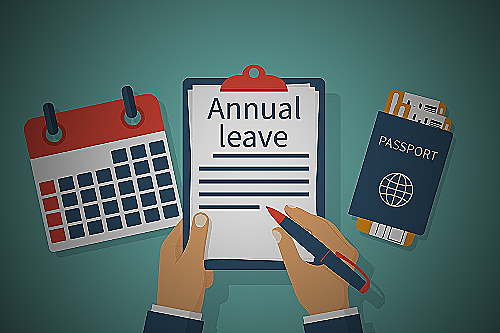Leaves for the Day: A Guide to Effective Time-Off Management
Effective time-off management is vital for both employees and the workplace. It allows employees to take a break from work, relax, and come back feeling refreshed and rejuvenated.
This, in turn, makes them more productive when they return to work. However, managing time off can be a hassle if not done correctly, which is where automation with dedicated HRMS software comes in handy.
The Benefits of Leaves for the Day
Taking a leave for the day can do wonders for an employee’s physical and mental health, resulting in improved productivity and increased job satisfaction. Here are some of the many benefits of taking time off for the day:
- A chance to recharge and relax from the work-related stress, which can lead to decreased burnout and increased mental motivation.
- The opportunity to spend time with family and friends, which can improve relationships and overall well-being.
- Improved physical health due to reducing the risk of illnesses and conditions associated with high levels of stress, such as heart disease and hypertension.
- Increased job satisfaction as employees feel valued and supported by their employers.
Having a paid time off policy in place and implementing it through an HRMS software can help employees manage their leaves more efficiently while benefiting the organization in the long run by improving employee retention and productivity.
Types of Leaves for the Day
Sick Leave
Sick leave is a type of leave that an employee can take for themselves or their dependents in case of illness or injury. Depending on the organization, the number of sick leaves an employee can avail of may vary.
Some organizations may have a separate pool of leaves for personal and dependent sick days. Sick leave is important to prevent the spread of contagious illnesses in the workplace and to ensure employees prioritize their health and recuperation.
Personal Leave
Personal leave is a type of leave that an employee can take for any personal reasons such as emergency situations, family commitments or other necessary absences. This type of leave may or may not be paid, depending on the company policy.
Personal leave can help employees maintain a work-life balance and unforeseen circumstances like sudden family emergencies or personal illnesses.
Vacation Leave
Vacation leave is a type of leave that employees use to take a planned break from work for a specific amount of time. Employees can use their vacation leaves for rest and relaxation, exploring new places or pursuing a hobby.
The number of vacation leaves that an employee is entitled to depend on the company policy and the number of years of service. This type of leave helps employees maintain a healthy work-life balance and reduces stress and burnout
The Challenges of Effective Time-Off Management
Employee Burnout
Employee burnout is a common problem among overworked employees who don’t take enough time off to recharge. This can result in decreased productivity and job satisfaction, leading to a high turnover rate.
Providing employees with adequate time off and encouraging them to take it can prevent burnout and increase engagement. Employers should consider incentivizing employees to take time off by offering bonuses for unused vacation days or implementing an unlimited PTO policy.
Lost Time
Lost time due to inadequate time-off management can result in decreased productivity and overall success of the workplace. It is essential to have a clear and concise PTO policy that employees understand and follow.
Employers should also consider implementing automated HRMS software to handle time-off requests and tracking, ensuring that no important deadlines or projects fall through the cracks.
Coordination with Remote Workers
Effective time-off management is particularly important for remote workers who may feel disconnected from the office culture. Employers should clearly communicate their PTO policies to remote workers and ensure that they have the same access to time off as their in-office counterparts.
Communication and planning are key to ensuring that remote workers can take time off without any negative impact on their work or the team’s productivity.
Taking time off for the day can be a form of self-care that helps employees to maintain their physical and mental health. Having an effective time-off management policy not only helps the employees to avoid burnout, but also increases productivity and job satisfaction.
Clear communication and planning are crucial to effectively managing time off, particularly for remote workers who may feel disconnected from the office culture. Employers should consider automating their time-off management with HRMS software to ensure that requests are handled promptly and accurately.
Best Practices for Effective Time-Off Management
Employee Communication and Transparency
Open and honest communication between employees and management is critical when it comes to managing time off. Employees should feel comfortable discussing their time-off needs with their managers, and managers should communicate clearly and transparently about company policies and procedures for time off.
Regular meetings or check-ins can help keep communication lines open.
Clear Time-Off Policies
Clear time-off policies are important to ensure that employees understand the procedures for requesting time off and to avoid any ambiguity around how their requests will be handled. Policies should include information on the process for requesting time off, how much notice is required, and any blackout dates or restrictions.
Policies should be communicated clearly to employees and made easily accessible.
Providing Adequate Coverage
When employees take time off, it’s important to ensure that adequate coverage is available to maintain productivity and prevent burnout. Cross-training employees in different roles can be helpful for providing backup coverage.
Employers can also consider hiring temporary staff or offering overtime to existing employees to cover any gaps.
Dealing with Leave Requests
Handling Multiple Requests
When handling multiple leave requests, it is important to prioritize based on several factors. Leaves for the day should be considered based on the employee’s tenure, urgency of the request, and the impact on the organization.
A fair and transparent process should be put in place to ensure that employees are aware of how the decision is made, and they feel that their request has been considered.
Denying Leave Requests
Although it can be difficult, it is sometimes necessary to deny an employee’s leave request. When doing so, it is important to provide clear and transparent communication with the employee.
Be honest about the reasons for denial, and provide a clear explanation. Consider other options that may be available and provide suggestions to the employee.
It is important to ensure that the denial is not discriminatory, and that the process used for denying leave is applied consistently.
Legal Considerations for Effective Time-Off Management
Workers’ Compensation Laws
As an employer, it’s essential to understand workers’ compensation laws when managing employees’ time off. Workers’ compensation laws are regulations that protect employees who suffer work-related injuries or illnesses.
These laws require employers to provide compensation benefits for medical expenses, lost wages, and rehabilitation costs. It is vital to abide by these laws to avoid any legal issues or disputes that may arise.
State-by-State Workers’ Compensation Lawyers
If you’re unsure about how to implement workers’ compensation laws in your organization, seeking legal advice from workers’ compensation lawyers may be necessary. These legal professionals specialize in workers’ compensation laws and can help provide state-specific assistance on compliance and regulations.
Several firms offer services for workers’ compensation lawyers in every state. A consultation with these lawyers can help ensure that you’re meeting your legal obligations as an employer.
Conclusion
Managing employee time-off requests is a crucial aspect of maintaining a productive and healthy workplace. Providing adequate time off for your employees can improve physical and mental health, boost productivity, and strengthen the relationship between the employer and employee.
Employers should learn to prevent burnout among employees, which can be achieved by maintaining workplace boundaries, practicing rituals, and taking time off. It is also essential to have the right leave policy that satisfies the legal obligation and safety while providing flexibility for employees.
Effective communication among employees and managers is key to maintaining a successful business. Finally, creating a process for managing overlapping time-off requests, allowing for shift swapping, and always striving to be fair can help businesses manage employee leave effectively and efficiently.


